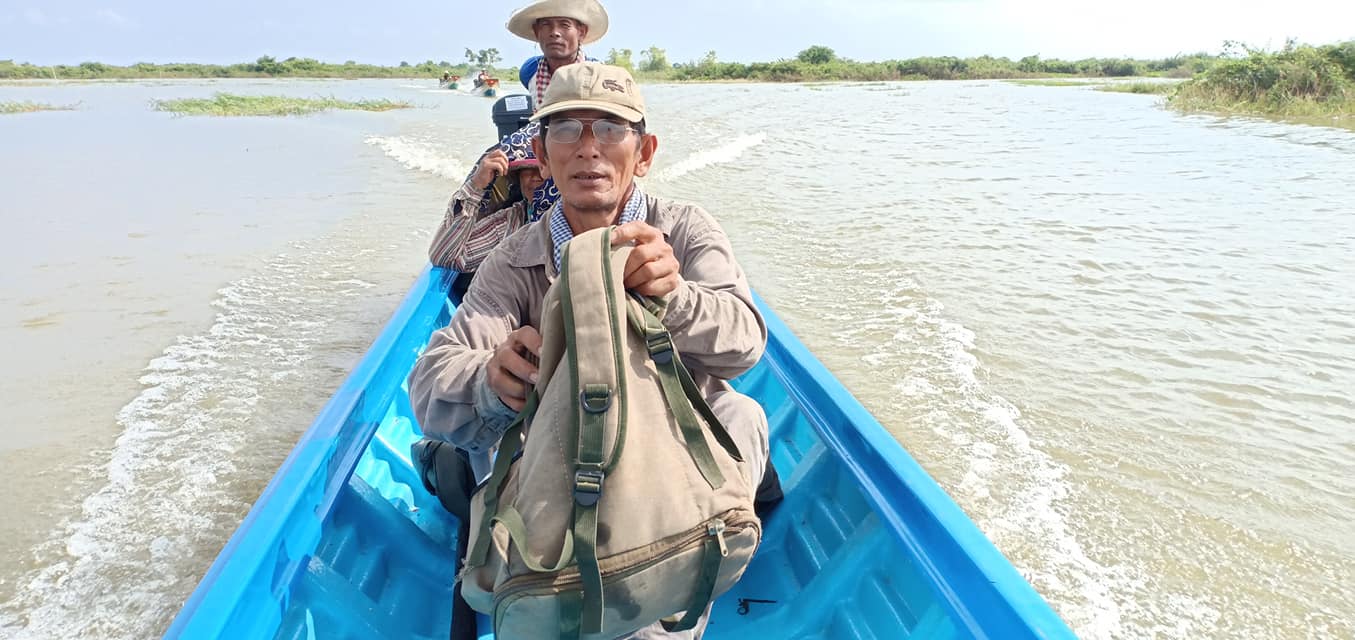 by Hor Samath
by Hor Samath
My name is Hor Samath. I was born on April 7, 1959, in Prek Treng Village (next to the Bassac River), Sithbo Commune, Saang District, Kandal Province, to a farming family. My wife is Pich Pov – we were married in 1982 and have seven children. In 1994, my family returned from Site Two refugee camp in Thailand to live in Sdei Krom Village, Prek Luong Commune, Ek Phnom Dstrict, Battambang Province. We grow vegetables and fish to support our family. The geography of Sdey Krom Village is similar to my hometown. The livelihoods of the villagers depend almost entirely on natural resources, especially the Sangke River, which is connected to the Tonle Sap Lake and the Mekong River. Stung Sangke greatly supports the livelihood of villagers with water for household consumption and irrigation, and provides a navigation route to Battambang Town and Tonle Sap Lake. On top of that, Stung Sangke is an important fishing spot during all seasons, especially in the windy season from November to February. People can catch a lot of fish to eat, sell, and process. Most of them use only traditional, small-scale fishing gears such as spread nets, floating nets, fishing line with hooks, Lorb (trap), small lift nets or hand trawls, cast nets, or a single line with a hook, which is popular among most women to catch fish for cooking for their family.
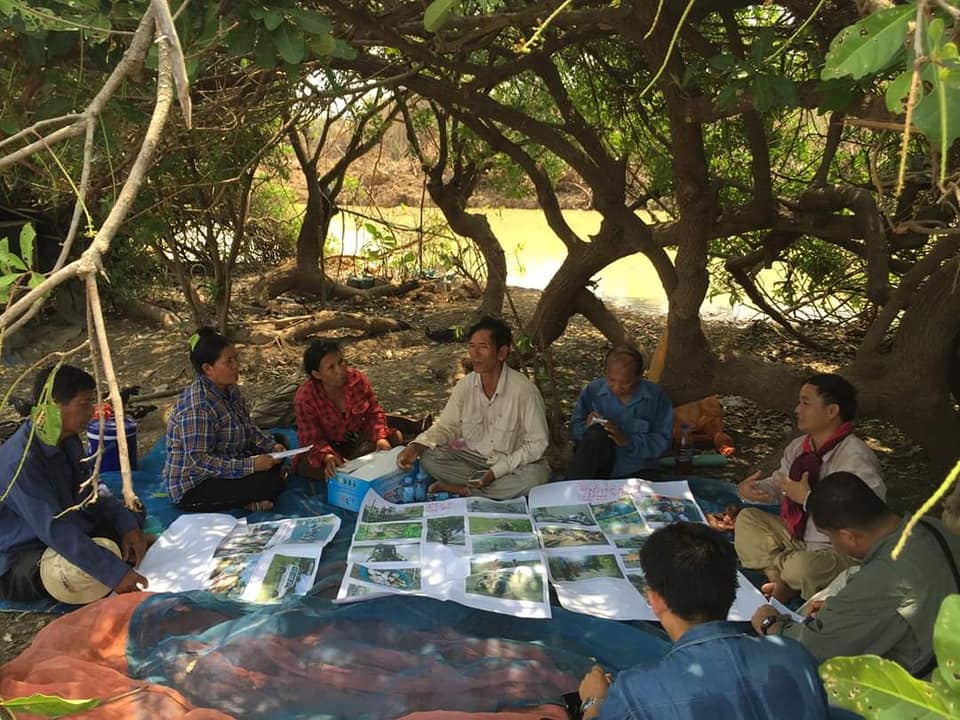 In 1997, due to the rise in illegal fishing gears, such as mosquito nets or small mesh-size gillnet and Samras (wooden barricades), waste disposal, cutting down flooded forest, and a sharp increase in the use of chemical fertilizers and pesticides on agricultural crops, especially rice, we experienced environmental changes such as the drying out of ponds, streams, and tributaries, which led to a gradual decrease in the number of birds, reptiles, bees and aquatic animals (especially fish) every year. That year, the Village Support Group (VSG) facilitated the process of establishing an association in Sdey Krom Village called the “Khmer Farmer Consciousness Promotion Association.” Its major programs included credit and saving, dry season rice and rice banking, planting crops using natural fertilizer from manure and compost, and capacity building on rights and particular laws. I volunteered for the association, then was elected to be the deputy director.
In 1997, due to the rise in illegal fishing gears, such as mosquito nets or small mesh-size gillnet and Samras (wooden barricades), waste disposal, cutting down flooded forest, and a sharp increase in the use of chemical fertilizers and pesticides on agricultural crops, especially rice, we experienced environmental changes such as the drying out of ponds, streams, and tributaries, which led to a gradual decrease in the number of birds, reptiles, bees and aquatic animals (especially fish) every year. That year, the Village Support Group (VSG) facilitated the process of establishing an association in Sdey Krom Village called the “Khmer Farmer Consciousness Promotion Association.” Its major programs included credit and saving, dry season rice and rice banking, planting crops using natural fertilizer from manure and compost, and capacity building on rights and particular laws. I volunteered for the association, then was elected to be the deputy director.
Between 1997–2000, there was a fishery boundary dispute, as some fishing lot owners encroached on the fishing grounds of people in Battambang Province and other provinces around the Tonle Sap Lake. Some fishing lot owners even used violence, such as beating and threatening villagers to pay some money when they went fishing in the public fishing grounds. In fact, the Royal Government allocated the public fishing grounds for villagers to do small-scale fishing. Violence also took place when people went to take care of their deep-water rice fields located within the commercial fishing lots. Fishing lot owners accused the villagers of fishing in their areas, and this dispute led to the arrest and imprisonment of some villagers.
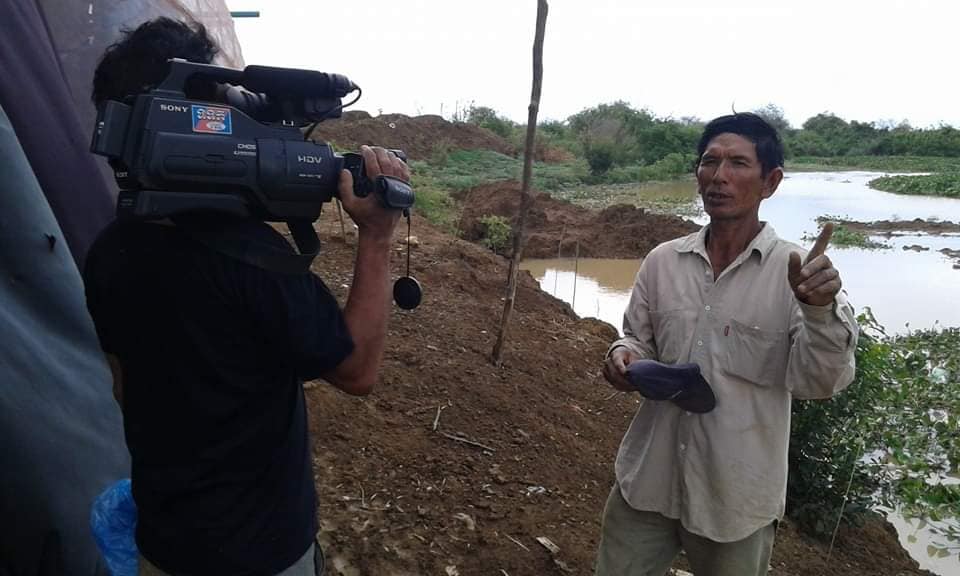 In 1999-2000, I could not tolerate this cruelty anymore. With some understanding of rights and laws, I joined the people of Battambang Province residing in the floodplain, especially the fishermen, and together we persistently made a non-violent protest. Despite serious threats and the shooting of a villager of Peam Ek Commune, the protests still continued and the number of participants increased. At that time, people in four other provinces around Tonle Sap Lake also protested, which attracted the attention of the public, national and international journalists, civil society, and the government.
In 1999-2000, I could not tolerate this cruelty anymore. With some understanding of rights and laws, I joined the people of Battambang Province residing in the floodplain, especially the fishermen, and together we persistently made a non-violent protest. Despite serious threats and the shooting of a villager of Peam Ek Commune, the protests still continued and the number of participants increased. At that time, people in four other provinces around Tonle Sap Lake also protested, which attracted the attention of the public, national and international journalists, civil society, and the government.
To solve this problem, the Royal Government decided to reform the fisheries sector for the first time by eliminating any fishing lots with a value of 30 million riel or under, and dividing parts of fishing lots with a value higher than 30 million riels in Battambang Province on December 5, 2000. The government also removed and divided four more fishing lots in the provinces adjacent to Tonle Sap Lake in 2001, which accounted for 56% of the total area of the Tonle Sap fishing lots. The areas were then reserved for the villagers to fish using small-scale gear and allowed people to establish community fisheries, which empowered people to manage and use fisheries resources sustainably.
In 2003, with the coordination and support from various organizations as well as the cooperation of local authorities and relevant institutions, many villages and communes with both inland and marine fishing grounds in the Kingdom of Cambodia established community fisheries consecutively. In 2003, I became a founder to establish six community fisheries in Prek Luong and Prek Khporb Communes, Ek Phnom District, Battambang Province. It was then that the Khmer Farmer Consciousness Promotion Association in Sdey Krom Village changed from an association into a community fishery called Sdey Krom Roharl Suong. Through voting by the people in Sdey Krom Village and Roharl Suong Village in Prek Luong Commune, Ek Phnom District, Battambang Province, I was elected to be a consultant to community fisheries in Prek Luong and Prek Khporb Communes.
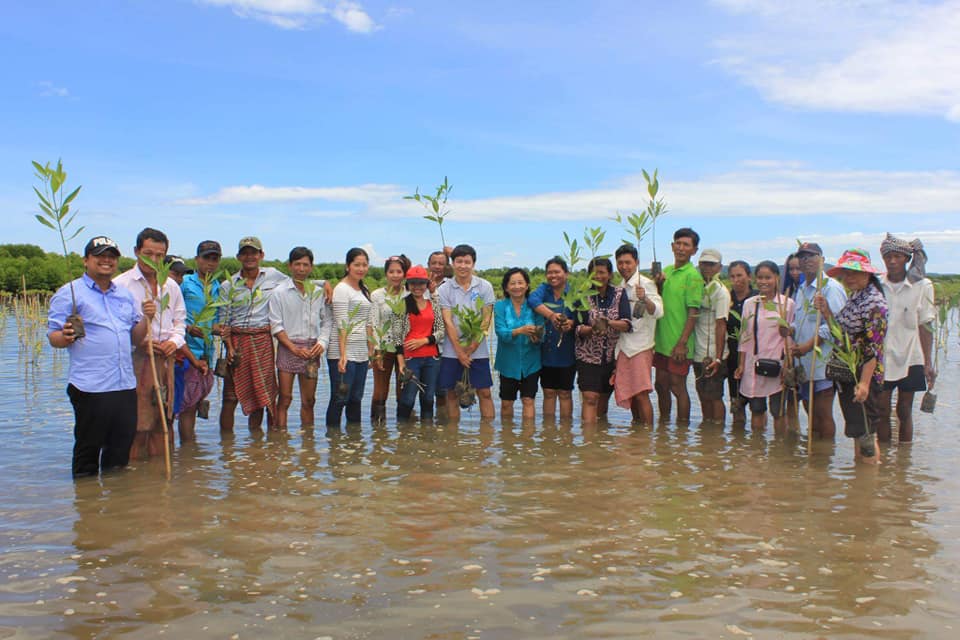 In 2010, I scaled back my participation in natural resources conservation in other provinces to have more time to spend with Sdey Krom Roharl Suong community fishery in Battambang Province. We work together to restore fisheries resources that are declining and gradually depleted. I especially want to leave some legacy in Raing Pen Bei Tor before I leave this world. In 2012, I was elected as Deputy Director of Sdey Krom Roharl Suong Community Fishery Committee. My main job is to seek support and improve the Raing Pen Bei Tor Conservation Area into a biodiversity conservation area for fisheries resources and a community recreation area for students and anyone who loves nature.
In 2010, I scaled back my participation in natural resources conservation in other provinces to have more time to spend with Sdey Krom Roharl Suong community fishery in Battambang Province. We work together to restore fisheries resources that are declining and gradually depleted. I especially want to leave some legacy in Raing Pen Bei Tor before I leave this world. In 2012, I was elected as Deputy Director of Sdey Krom Roharl Suong Community Fishery Committee. My main job is to seek support and improve the Raing Pen Bei Tor Conservation Area into a biodiversity conservation area for fisheries resources and a community recreation area for students and anyone who loves nature.
Since I first volunteered for conservation work, I have encountered many challenges and difficulties that I need to address. However, at the same time, I have learned many lessons based on the experiences and knowledge I have gained from conservation work. For example, it is important to discuss issues with key people in the community and arrange an actual site visit, then make an action plan. I also disseminate information about challenges and solutions to the public by inviting community members, villagers, teachers, students, youth groups, monks, elders, journalists and relevant stakeholders to examine the actual situation in the conservation area and discuss possible solutions. I also communicate and provide information to government officials, civil society and donors through communication apps like Telegram.
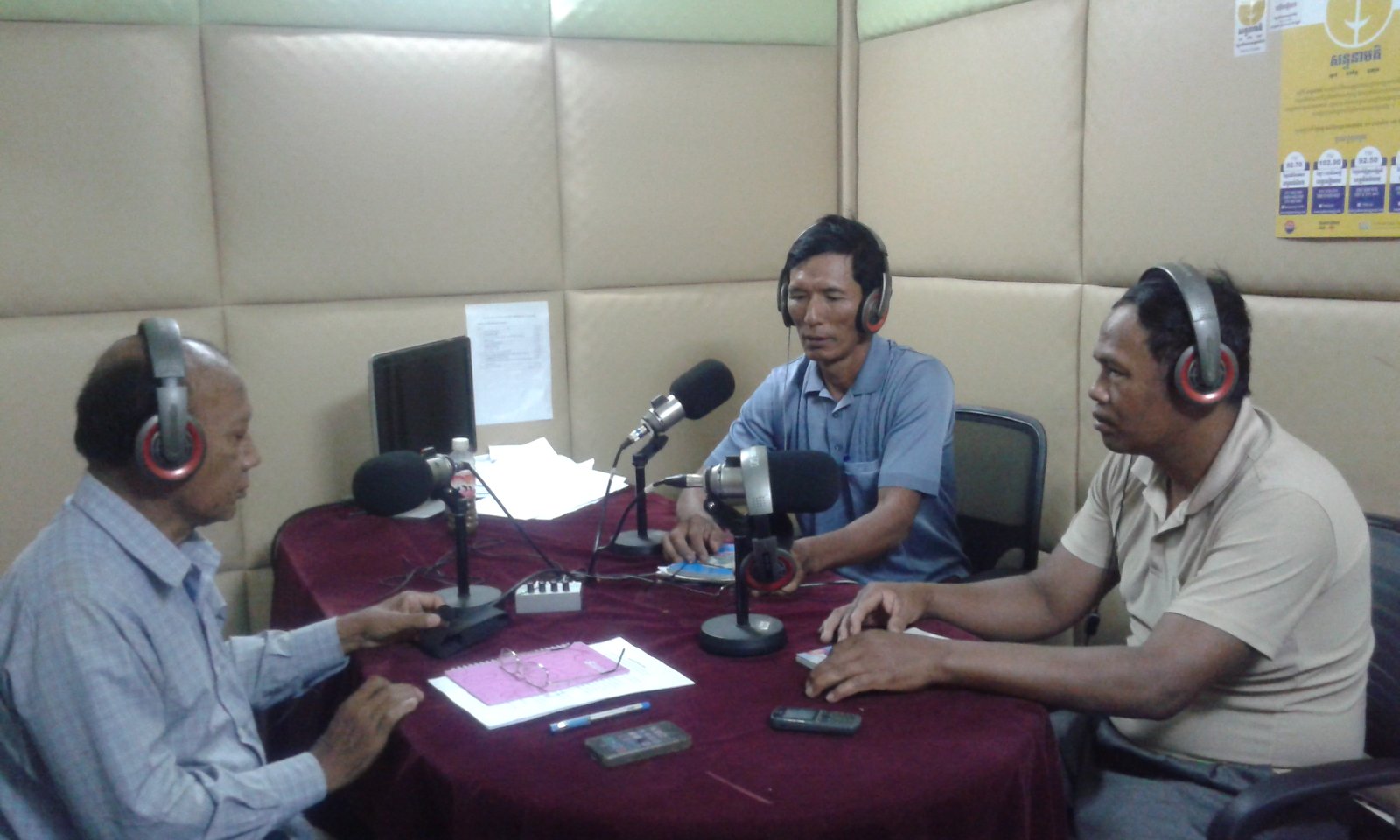
Some activities I have undertaken as part of my work include increasing patrol activities, building a patrol house, and assigning guards to patrol in the protected areas on a regular basis. We also set up boundary poles to mark the protected area, set up a system to prevent fish from leaving the conservation area while they are spawning, and are re-planting flooded forests that had been cut down in protected areas. I love to work on education, outreach, and communication to solve problems in the community. I believe it is important to participate in social work and to be involved in promoting civil rights, especially for women and poor families in the community, and to participate in environmental protection and restoring lost natural resources, especially fisheries resources. I understand that environmental protection and fisheries resources conservation are the responsibility of every citizen, and are also part of saving good merit, despite the dissatisfaction of those who are selfish and do not care about the negative impact on others and society. I am motivated by the support and encouragement from family, relatives, organizations, groups of people who love natural resources, and kind-hearted people. I want to leave some memories before leaving this world.
Hor Samath is a 2020–2022 Mekong Conservation Hero selected by the Wonders of the Mekong Project.
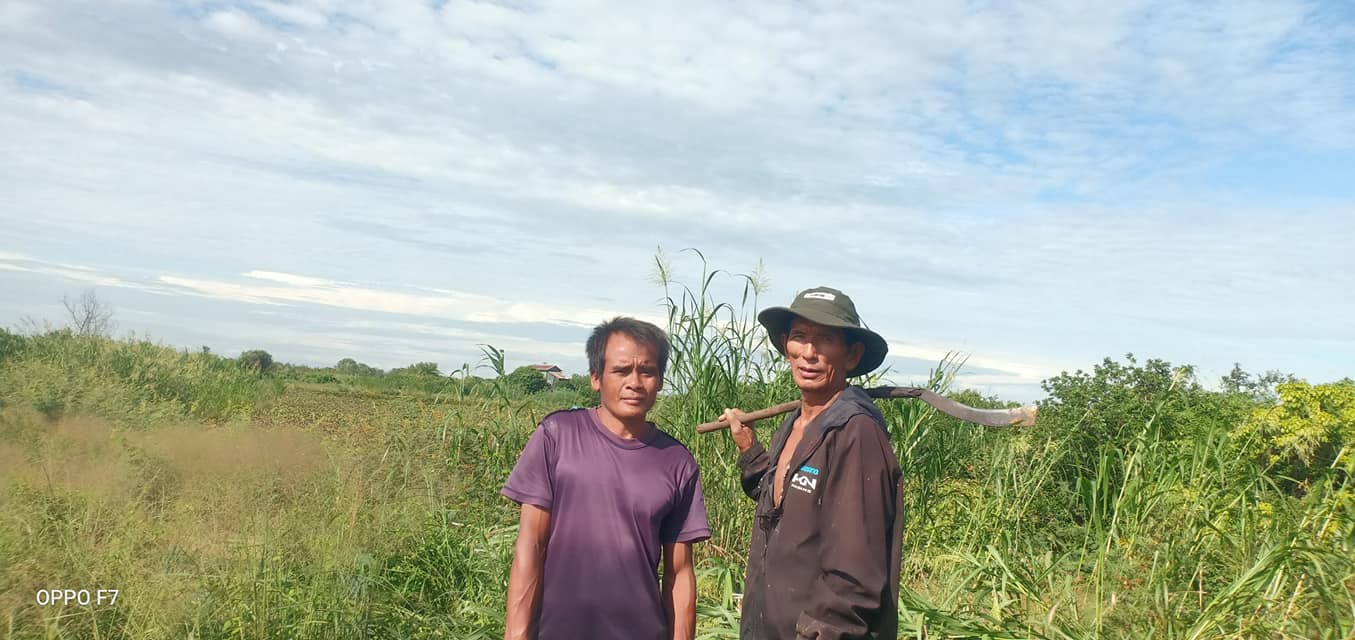
ខ្ញុំឈ្មោះហោ សំអាត កើតនៅថ្ងៃទី៧ ខែមេសា ឆ្នាំ១៩៥៩ នៅភូមិព្រែកត្រែង(ជាប់ទន្លេបាសាក់) ឃុំសិត្បូរ ស្រុកស្អាង ខេត្តកណ្ដាល ក្នុងគ្រួសារកសិករ។ ប្រពន្ធខ្ញុំឈ្មោះពេជ្រ ពៅ ។ យើង បានរៀបការនៅឆ្នាំ១៩៨២ និងមានកូន៧នាក់ (ប្រុស២) ។ នៅឆ្នាំ១៩៩៤ គ្រួសាររបស់ខ្ញុំបានធ្វើមាតុភូមិនិវត្តន៍ពីជុំរុំសាយធូ មករស់នៅ ភូមិស្ដីក្រោម ឃុំព្រែកហ្លួង ស្រុកឯកភ្នំ ខេត្តបាត់ដំបង ប្រកបរបរដាំបន្លែ និងនេសាទត្រីរួមផ្សំ។ ស្ថានភាព ភូមិសាស្ត្រនៅភូមិស្តីក្រោម វាប្រហាក់ប្រហែលទៅនិងភូមិកំណើតរបស់ខ្ញុំដែរ។ ការរស់នៅរបស់អ្នកភូមិពឹងផ្អែកស្ទើរទាំងស្រុងលើធនធានធម្មជាតិ ពិសេសស្ទឹងសង្កែ ដែលមានទំនាក់ទំនងជាមួយបឹងទន្លេសាប និងទន្លេមេគង្គ។ ស្ទឹងបានជួយសម្រួលដល់ការរស់នៅរបស់អ្នកភូមិទាំងទឹកប្រើប្រាស់ក្នុងគ្រួសារ ស្រោចស្រពដំណាំ ផ្លូវនាវាចរណ៍ទៅទីរួមខេត្តបាត់ដំបង និងបឹងទន្លេសាប។ មិនតែប៉ុណ្ណោះស្ទឹងសង្កែ ជាកន្លែងនេសាទត្រីដ៏សំខាន់គ្រប់រដូវ ពិសេសចាប់ពីរដូវរំហើយ(ខែវិច្ឆិកា-កុម្ភៈ)។ ប្រជាពលរដ្ឋអាចចាប់ត្រីបានច្រើនសម្រាប់ហូប លក់ និងកែច្នៃ។ ពួកគាត់ភាគច្រើនប្រើតែឧបករណ៍នេសាទបុរាណ និងលក្ខណៈគ្រួសារដូចជា មងរាយ ឬមងពាក់ មងបណ្ដែត សន្ទូចរាយ ឬសន្ទូចរនង សន្ទូចបង្កៃ លប ថ្នង សំណាញ់ និងសន្ទូចផ្លែមួយដែលស្ត្រី ភាគច្រើន ចូលចិត្តប្រើ សម្រាប់ចាប់ត្រីធ្វើជាម្ហូបក្នុងគ្រួសារ ។
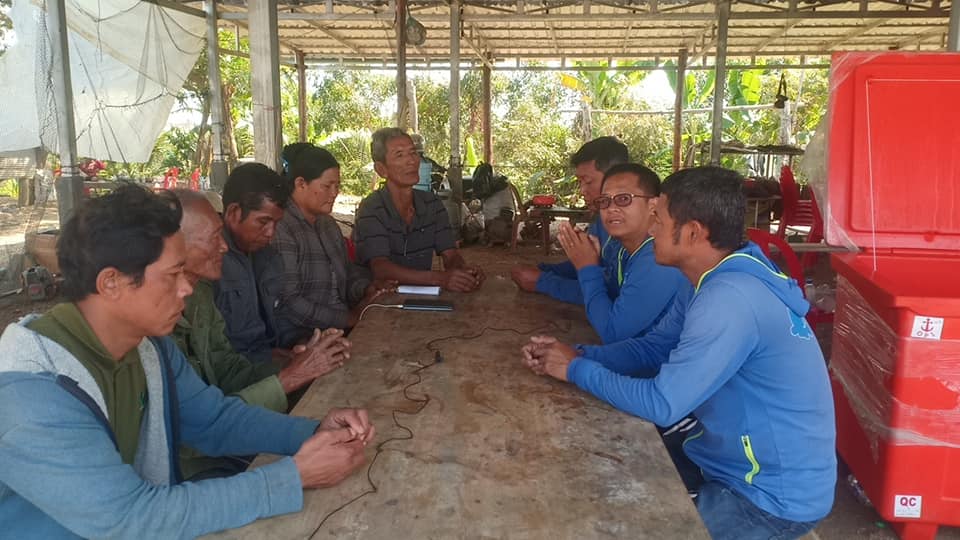 ក្នុងឆ្នាំ១៩៩៧ ដោយការកើនឡើងនៃឧបករណ៍នេសាទខុសច្បាប់ចាប់ត្រីមានលូស្បៃមុង ឬអ៊ុយ ដាក់សម្រាស់ ការចាក់ចោលកាកសំណល់ ការបំផ្លាញព្រៃលិចទឹក ព្រមទាំងការកើនឡើងយ៉ាងខ្លាំងនៃការប្រើជី និងថ្នាំពុលគីមី លើដំណាំកសិកម្ម ពិសេសដំណាំស្រូវ រួមផ្សំនៃការកើនពលរដ្ឋ និងការគោករីងរាក់នៃបឹង អូរ ព្រែកផង យើងបានជួប ប្រទះការប្រែប្រួលនៃបរិស្ថានមួយចំនួនដែលធ្វើឲ្យបក្សាបក្សី សត្វល្មូន ឃ្មុំ និងមច្ឆជាតិ ពិសេសត្រីបានថយចុះ បន្តិចម្តងៗជារៀងរាល់ឆ្នាំ ។ ក្នុងឆ្នាំដដែលនោះ អង្គការក្រុមទ្រទ្រង់ភូមិហៅកាត់ថាVSG បានជួយឧបត្ថម្ភ និងសម្របសម្រួលបង្កើត សមាគមនៅភូមិស្ដីក្រោមឈ្មោះថា ស្មារតីលើកស្ទួយកសិករខ្មែរ។ កម្មវីធីធំៗរបស់ សមាគមនោះរួមមាន ឥណទាននិងប្រាក់សន្សំ ស្រូវប្រាំងនិងធនាគារស្រូវ ការដាំដំណាំដោយប្រើជីធម្មជាតិ លាមកសត្វនិងជីកំប៉ុស ព្រមទាំងពង្រឹងសមត្ថភាព ពីសិទ្ធិ និងច្បាប់មួយចំនួន ។ ខ្ញុំបានស្ម័គ្រចិត្តបំរើការងារក្នុង សមាគម ដោយជាប់ឆ្នោតជាអនុប្រធាន ។
ក្នុងឆ្នាំ១៩៩៧ ដោយការកើនឡើងនៃឧបករណ៍នេសាទខុសច្បាប់ចាប់ត្រីមានលូស្បៃមុង ឬអ៊ុយ ដាក់សម្រាស់ ការចាក់ចោលកាកសំណល់ ការបំផ្លាញព្រៃលិចទឹក ព្រមទាំងការកើនឡើងយ៉ាងខ្លាំងនៃការប្រើជី និងថ្នាំពុលគីមី លើដំណាំកសិកម្ម ពិសេសដំណាំស្រូវ រួមផ្សំនៃការកើនពលរដ្ឋ និងការគោករីងរាក់នៃបឹង អូរ ព្រែកផង យើងបានជួប ប្រទះការប្រែប្រួលនៃបរិស្ថានមួយចំនួនដែលធ្វើឲ្យបក្សាបក្សី សត្វល្មូន ឃ្មុំ និងមច្ឆជាតិ ពិសេសត្រីបានថយចុះ បន្តិចម្តងៗជារៀងរាល់ឆ្នាំ ។ ក្នុងឆ្នាំដដែលនោះ អង្គការក្រុមទ្រទ្រង់ភូមិហៅកាត់ថាVSG បានជួយឧបត្ថម្ភ និងសម្របសម្រួលបង្កើត សមាគមនៅភូមិស្ដីក្រោមឈ្មោះថា ស្មារតីលើកស្ទួយកសិករខ្មែរ។ កម្មវីធីធំៗរបស់ សមាគមនោះរួមមាន ឥណទាននិងប្រាក់សន្សំ ស្រូវប្រាំងនិងធនាគារស្រូវ ការដាំដំណាំដោយប្រើជីធម្មជាតិ លាមកសត្វនិងជីកំប៉ុស ព្រមទាំងពង្រឹងសមត្ថភាព ពីសិទ្ធិ និងច្បាប់មួយចំនួន ។ ខ្ញុំបានស្ម័គ្រចិត្តបំរើការងារក្នុង សមាគម ដោយជាប់ឆ្នោតជាអនុប្រធាន ។
នៅឆ្នាំ១៩៩៧-២០០០ ជម្លោះដែននេសាទបានកើតឡើង ដោយសារអាជីវករឡូតិ៍នេសាទមួយចំនួនបានរំលោភយកដែននេសាទរបស់ប្រជាពលរដ្ឋក្នុងខេត្តបាត់ដំបង និងខេត្តផ្សេងទៀតនៅជុំវិញបឹងទន្លេសាប ។ មិនត្រឹមតែ រំលោភយកដែននេសាទរបស់ប្រជាពលរដ្ឋនោះទេ អាជីវករឡូតិ៍នេសាទខ្លះបានប្រើអំពើហិង្សា ដោយបានវាយដំ និង ជំរិតទារប្រាក់ពីប្រជាពលរដ្ឋ នៅពេលដែលប្រជាពលរដ្ឋបានទៅនេសាទត្រីក្នុងដែននេសាទ។ ដែលការពិតនោះ គឺរាជរដ្ឋាភិបាល បានទុកសម្រាប់ប្រជាពលរដ្ឋរនេសាទជាលក្ខណៈគ្រួសារ។ អំពើហិង្សាក៏កើតមានដែរ ពេលដែលប្រជាពលរដ្ឋ បានទៅមើលដំណាំស្រូវ (ស្រូវឡើងទឹក ឬស្រូវវារ) របស់ពួកគាត់ ដែលមានទីតាំង ស្ថិតនៅក្នុងដែនឡូត៍នេសាទ នារដូវបើកការនេសាទ។ ដោយអាជីវករឡូតិ៍នេសាទបានចោទប្រជាពលរដ្ឋថា ចូលនេសាទត្រីក្នុងដែននេសាទពួកគេ ករណីនេះមានការចាប់ប្រជាពលរដ្ឋដាក់គុកផងដែរ។
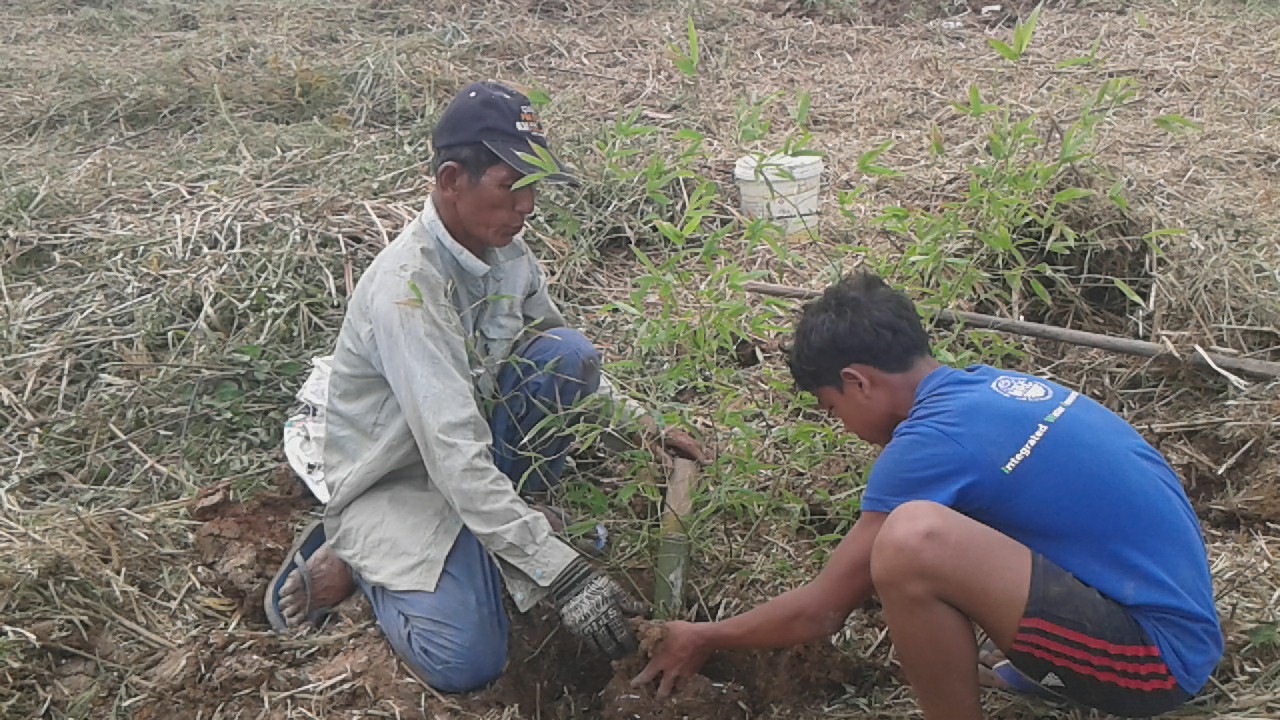 ឆ្នាំ១៩៩៩-២០០០ ខ្ញុំមិនអាចទ្រាំទ្រនឹងអំពើឃោរឃៅនេះបានទៀតទេ។ ដោយបានយល់ខ្លះៗពីសិទ្ធិ និងច្បាប់ ខ្ញុំបានចូលរួមជាមួយប្រជាពលរដ្ឋខេត្តបាត់ដំបង ដែលរស់នៅក្នុងតំបន់ទឹកលិចពិសេសប្រជានេសាទ បានរួមគ្នាធ្វើ ការទាមទារតវ៉ាដោយអហិង្សាយ៉ាងខ្លាំងក្លា។ បើទោះបីមានការគំរាមកំហែង និងបាញ់ឲ្យ ប្រជាពលរដ្ឋម្នាក់ នៅឃុំពាមឯករបួសក៏ដោយ ក៏ការទាមទារតវ៉ានៅតែបន្ត ចំនួនអ្នកចូលរួមបានកើនឡើង។ ទន្ទឹមនឹងនេះផងដែរ ប្រជាពលរដ្ឋនៅខេត្តចំនួន៤ផ្សេងទៀតនៅជុំវិញបឹងទន្លេសាប ក៏បានធ្វើការទាមទារ តវ៉ាផងដែរ ដែលជាហេតុធ្វើឲ្យ ករណីនេះមានការចាប់អារម្មណ៍ពីមហាជន អ្នកសារព័ត៌មានជាតិ អន្តរជាតិ សង្គមស៊ីវិល និងរាជរដ្ឋាភិបាល។
ឆ្នាំ១៩៩៩-២០០០ ខ្ញុំមិនអាចទ្រាំទ្រនឹងអំពើឃោរឃៅនេះបានទៀតទេ។ ដោយបានយល់ខ្លះៗពីសិទ្ធិ និងច្បាប់ ខ្ញុំបានចូលរួមជាមួយប្រជាពលរដ្ឋខេត្តបាត់ដំបង ដែលរស់នៅក្នុងតំបន់ទឹកលិចពិសេសប្រជានេសាទ បានរួមគ្នាធ្វើ ការទាមទារតវ៉ាដោយអហិង្សាយ៉ាងខ្លាំងក្លា។ បើទោះបីមានការគំរាមកំហែង និងបាញ់ឲ្យ ប្រជាពលរដ្ឋម្នាក់ នៅឃុំពាមឯករបួសក៏ដោយ ក៏ការទាមទារតវ៉ានៅតែបន្ត ចំនួនអ្នកចូលរួមបានកើនឡើង។ ទន្ទឹមនឹងនេះផងដែរ ប្រជាពលរដ្ឋនៅខេត្តចំនួន៤ផ្សេងទៀតនៅជុំវិញបឹងទន្លេសាប ក៏បានធ្វើការទាមទារ តវ៉ាផងដែរ ដែលជាហេតុធ្វើឲ្យ ករណីនេះមានការចាប់អារម្មណ៍ពីមហាជន អ្នកសារព័ត៌មានជាតិ អន្តរជាតិ សង្គមស៊ីវិល និងរាជរដ្ឋាភិបាល។
ដើម្បីដោះស្រាយបញ្ហានេះ រាជរដ្ឋាភិបាលបានសម្រេចកែទម្រង់វិស័យជលផលលើកទី១ ដោយបាន លុបឡូតិ៍នេសាទ ដែលមានតម្លៃត្រឹម៣០លានរៀលចុះ និងកាត់ផ្នែកខ្លះនៃឡូតិ៍នេសាទដែលមាន តម្លៃ៣០លានរៀលឡើង ក្នុងខេត្តបាត់ដំបងនៅថ្ងៃទី០៥ ខែធ្នូ ឆ្នាំ២០០០។ រាជរដ្ឋាភិបាលបានលុប និងកាត់ឡូតិ៍ នេសាទនៅក្នុងខេត្តជាប់បឹងទន្លេសាបចំនួន៤ទៀតនៅអំឡុងឆ្នាំ២០០១ ដែលមានផ្ទៃសរុប៥៦% នៃផ្ទៃឡូតិ៍ នេសាទបឹងទន្លេសាប។ បន្ទាប់ពីនោះ តំបន់ទាំងនោះត្រូវបានរក្សាទុកសម្រាប់ ប្រជាពលរដ្ឋរកនេសាទជាលក្ខណៈគ្រួសារ និងបានអនុញ្ញាត ឲ្យប្រជាពលរដ្ឋបង្កើតជា សហគមន៍នេសាទ ដើម្បីផ្ដល់សិទ្ធិដល់ប្រជាពលរដ្ឋគ្រប់គ្រង និងប្រើប្រាស់ ធនធានជលផលឲ្យមាននិរន្តរភាព។
ឆ្នាំ២០០៣ ដោយមានការជួយសម្របសម្រួល និងឧបត្ថម្ភពីអង្គការនានា ព្រមទាំងមានកិច្ចសហការ ពីអាជ្ញាធរដែនដី និងស្ថាប័នពាក់ព័ន្ធផង មានភូមិឃុំជាច្រើន ដែលមានទាំងដែននេសាទទឹកសាប និងទឹកប្រៃ នៃព្រះរាជាណាចក្រកម្ពុជា បានបង្កើតជាសហគមន៍នេសាទជាបន្តបន្ទាប់ ។ ឆ្នាំ២០០៣ ខ្ញុំជាស្ថាបនិក បានចូលរួមបង្កើតសហគមន៍នេសាទចំនួន៦ ក្នុងឃុំព្រែកហ្លួង និងឃុំព្រែកខ្ពប ស្រុកឯកភ្នំ ខេត្តបាត់ដំបង។ ហើយពេលនោះសមាគមស្មារតីលើកស្ទួយកសិករខ្មែរភូមិស្តីក្រោម បានប្រែក្លាយពីសមាគមទៅជា សហគមន៍នេសាទឈ្មោះថា ស្ដីក្រោមរហាលសួង ។ តាមរយៈការបោះឆ្នោតពីប្រជាពលរដ្ឋក្នុងភូមិស្ដីក្រោម និងភូមិរហាលសួង ក្នុងឃុំព្រែកហ្លួង ស្រុកឯកភ្នំ ខេត្តបាត់ដំបង ខ្ញុំត្រូវបានគេជ្រើសតាំង ជាទីប្រឹក្សាសហគមន៍នេសាទ ក្នុងឃុំព្រែកហ្លួង និងឃុំព្រែកខ្ពប។
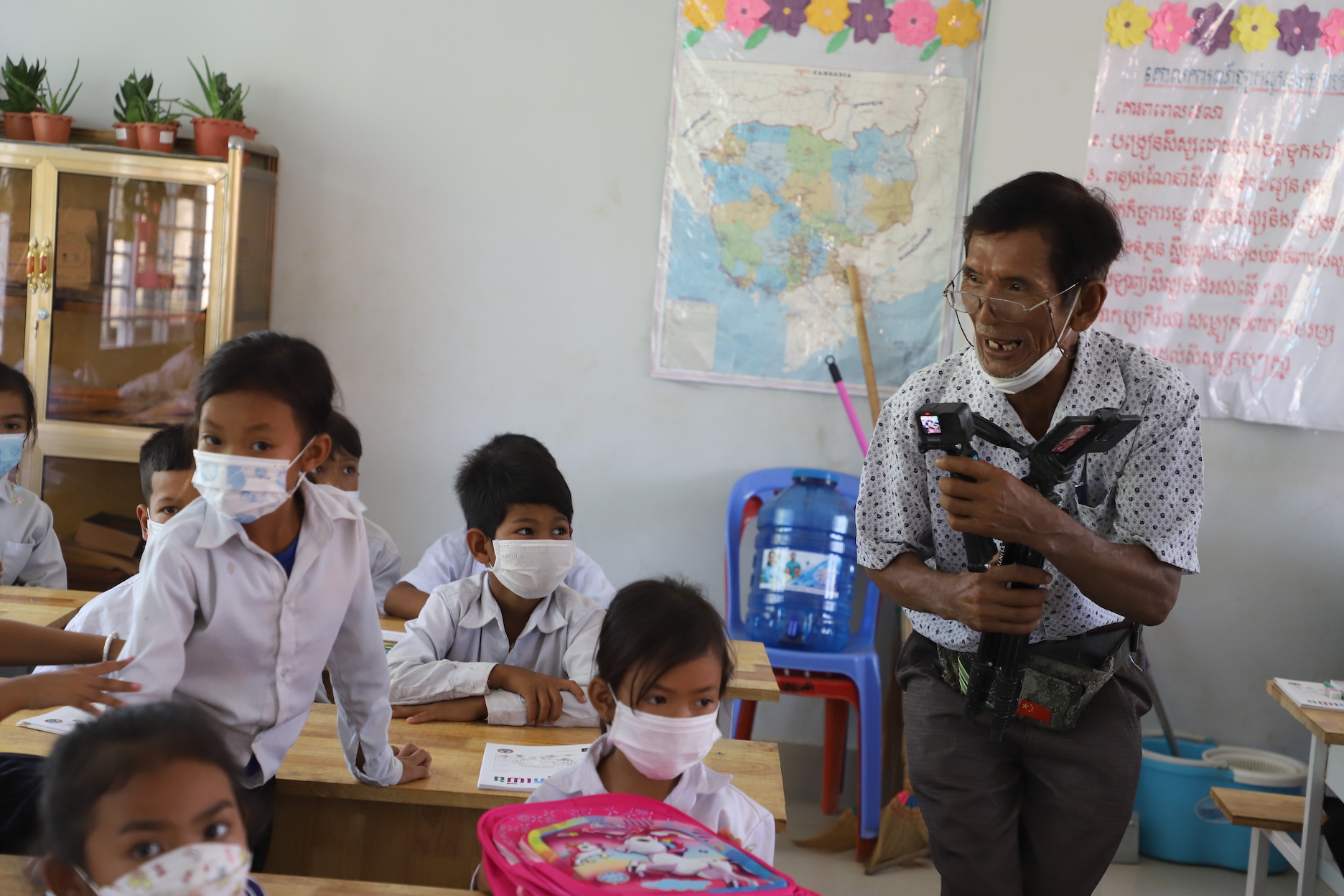 ឆ្នាំ២០១០ ខ្ញុំបានកាត់បន្ថយ និងបញ្ឈប់ការងារមួយចំនួនក្នុងការចូលរួមថែរក្សាធនធានធម្មជាតិ នៅតាមបណ្ដាខេត្តនានា ដើម្បីខ្ញុំមានពេលច្រើនចូលរួមជាមួយសហគមន៍នេសាទស្ដីក្រោមរហាលសួង និងសហគមន៍នេសាទផ្សេងទៀតក្នុងខេត្តបាត់ដំបង។ យើងរួមគ្នាស្ដារឡើងវិញនូវធនធានជលផល ដែលបានបាត់បង់និងថយចុះជាបន្តបន្ទាប់។ ពិសេសខ្ញុំចង់បន្សល់ទុកកេរ្ត៍ដំណែលខ្លះនៅរាំងពេន៣ត មុនពេលជីវិតចាកចេញពីផែនដី ។ ឆ្នាំ២០១២ ខ្ញុំបានជាប់ឆ្នោតជាអនុប្រធានគណៈកម្មការ សហគមន៍ នេសាទស្ដីក្រោមរហាលសួង។ ការងារសំខាន់របស់ខ្ញុំគឺស្វែងរកការគាំទ្រ និងរៀបចំកែលម្អតំបន់អភិរក្ស រាំងពេន៣ត ឲ្យទៅជាកន្លែងអភិរក្ស ជីវៈចម្រុះនៃធនធានជលផល និងជាកន្លែងកំសាន្ដរបស់សហគមន៍ សម្រាប់អ្នកសិក្សា និងចូលចិត្តធនធានធម្មជាតិ ។ ចាប់ពីខ្ញុំបានស្ម័គ្រចិត្តធ្វើការងារអភិរក្ស ខ្ញុំបានជួបបញ្ហា ប្រឈម និងផលលំបាកជាច្រើនដើម្បីដោះស្រាយ។ តែទន្ទឹមនឹងនោះខ្ញុំក៏ទទួលបាន បទពិសោធន៍ និងចំណេះដឹង ពីការងារអភិរក្សផងដែរ។ ឧទាហរណ៍ វាជាការចាំបាច់ដែលយើងត្រូវពិភាក្សាបញ្ហា ជាមួយបុគ្គលសំខាន់ៗនៅក្នុងសហគមន៍ និងរៀបចំការទៅពិនិត្យ ជាក់ស្តែងនៅនឹងកន្លែង បន្ទាប់មកយើងធ្វើផែនការសកម្មភាព។ ខ្ញុំក៏បានផ្សព្វផ្សាយអំពីបញ្ហាប្រឈម និងដំណោះស្រាយជូន សាធារណជន ដោយអញ្ជើញសមាជិកសហគមន៍ អ្នកភូមិ លោកគ្រូ អ្នកគ្រូ សិស្សានុសិស្ស ក្រុមយុវជន ព្រះសង្ឃ ចាស់ទុំក្នុងភូមិ អ្នកសារព័ត៌មាន និងភាគីពាក់ព័ន្ធ មកពិនិត្យស្ថានភាព ជាក់ស្តែងនៅក្នុងតំបន់អភិរក្ស និងពិភាក្សាអំពីដំណោះស្រាយដែលយើងអាចធ្វើចំណាត់ការបាន។ ខ្ញុំក៏ទំនាក់ទំនង និងផ្តល់ព័ត៌មានជូនដល់មន្ត្រីរដ្ឋាភិបាល អង្គការសង្គមស៊ីវិល និងម្ចាស់ជំនួយតាមរយៈកម្មវិធី ទំនាក់ទំនងដូចជា តេលេក្រាមជាដើម។
ឆ្នាំ២០១០ ខ្ញុំបានកាត់បន្ថយ និងបញ្ឈប់ការងារមួយចំនួនក្នុងការចូលរួមថែរក្សាធនធានធម្មជាតិ នៅតាមបណ្ដាខេត្តនានា ដើម្បីខ្ញុំមានពេលច្រើនចូលរួមជាមួយសហគមន៍នេសាទស្ដីក្រោមរហាលសួង និងសហគមន៍នេសាទផ្សេងទៀតក្នុងខេត្តបាត់ដំបង។ យើងរួមគ្នាស្ដារឡើងវិញនូវធនធានជលផល ដែលបានបាត់បង់និងថយចុះជាបន្តបន្ទាប់។ ពិសេសខ្ញុំចង់បន្សល់ទុកកេរ្ត៍ដំណែលខ្លះនៅរាំងពេន៣ត មុនពេលជីវិតចាកចេញពីផែនដី ។ ឆ្នាំ២០១២ ខ្ញុំបានជាប់ឆ្នោតជាអនុប្រធានគណៈកម្មការ សហគមន៍ នេសាទស្ដីក្រោមរហាលសួង។ ការងារសំខាន់របស់ខ្ញុំគឺស្វែងរកការគាំទ្រ និងរៀបចំកែលម្អតំបន់អភិរក្ស រាំងពេន៣ត ឲ្យទៅជាកន្លែងអភិរក្ស ជីវៈចម្រុះនៃធនធានជលផល និងជាកន្លែងកំសាន្ដរបស់សហគមន៍ សម្រាប់អ្នកសិក្សា និងចូលចិត្តធនធានធម្មជាតិ ។ ចាប់ពីខ្ញុំបានស្ម័គ្រចិត្តធ្វើការងារអភិរក្ស ខ្ញុំបានជួបបញ្ហា ប្រឈម និងផលលំបាកជាច្រើនដើម្បីដោះស្រាយ។ តែទន្ទឹមនឹងនោះខ្ញុំក៏ទទួលបាន បទពិសោធន៍ និងចំណេះដឹង ពីការងារអភិរក្សផងដែរ។ ឧទាហរណ៍ វាជាការចាំបាច់ដែលយើងត្រូវពិភាក្សាបញ្ហា ជាមួយបុគ្គលសំខាន់ៗនៅក្នុងសហគមន៍ និងរៀបចំការទៅពិនិត្យ ជាក់ស្តែងនៅនឹងកន្លែង បន្ទាប់មកយើងធ្វើផែនការសកម្មភាព។ ខ្ញុំក៏បានផ្សព្វផ្សាយអំពីបញ្ហាប្រឈម និងដំណោះស្រាយជូន សាធារណជន ដោយអញ្ជើញសមាជិកសហគមន៍ អ្នកភូមិ លោកគ្រូ អ្នកគ្រូ សិស្សានុសិស្ស ក្រុមយុវជន ព្រះសង្ឃ ចាស់ទុំក្នុងភូមិ អ្នកសារព័ត៌មាន និងភាគីពាក់ព័ន្ធ មកពិនិត្យស្ថានភាព ជាក់ស្តែងនៅក្នុងតំបន់អភិរក្ស និងពិភាក្សាអំពីដំណោះស្រាយដែលយើងអាចធ្វើចំណាត់ការបាន។ ខ្ញុំក៏ទំនាក់ទំនង និងផ្តល់ព័ត៌មានជូនដល់មន្ត្រីរដ្ឋាភិបាល អង្គការសង្គមស៊ីវិល និងម្ចាស់ជំនួយតាមរយៈកម្មវិធី ទំនាក់ទំនងដូចជា តេលេក្រាមជាដើម។
សកម្មភាពមួយចំនួនជាផ្នែកនៃការងាររបស់ខ្ញុំ ដែលខ្ញុំបានអនុវត្តរួមមាន ការបង្កើនសកម្មភាពល្បាត សាងសង់ផ្ទះល្បាត និងចាត់តាំងកំលាំងឱ្យដើរល្បាតក្នុងតំបន់ការពារជាប្រចាំ។ យើងក៏បានរៀបចំបោះ បង្គោលព្រំ ដើម្បីសម្គាល់តំបន់ការពារ រៀបចំប្រព័ន្ធការពារកុំឲ្យត្រីចាកចេញពីតំបន់អភិរក្ស នៅពេលវាកំពុង ពងកូន និង ដាំព្រៃលិចទឹកដែលត្រូវបានកាប់ឡើងវិញនៅតំបន់ការពារ ។ ខ្ញុំចូលចិត្តធ្វើការទាក់ទងការអប់រំ ការផ្សព្វផ្សាយ និងការទំនាក់ទំនងដើម្បីដោះស្រាយបញ្ហានានានៅក្នុងសហគមន៍។ ខ្ញុំជឿជាក់ថា វាជាការ សំខាន់ណាស់ដែលយើងត្រូវចូលរួមក្នុងការងារសង្គម និងចូលរួមក្នុងការលើកកម្ពស់សិទ្ធិសេរីភាព ជាពិសេស ចំពោះស្ត្រី និងគ្រួសារក្រីក្រនៅក្នុងសហគមន៍ និងចូលរួមការពារបរិស្ថាន និងការស្តារធនធានធម្មជាតិ ដែលបាត់បង់ ជាពិសេសធនធានជលផល។ ខ្ញុំយល់ថា ការការពារបរិស្ថាន និងអភិរក្សធនធានជលផល គឺជាទំនួលខុសត្រូវរបស់ប្រជាពលរដ្ឋគ្រប់រូប ហើយក៏ជាផ្នែកមួយនៃការសន្សំបុណ្យកុសលផងដែរ ទោះបីមានការមិនពេញចិត្តពីបុគ្គលអាត្មានិយមមួយចំនួន គិតតែពីប្រយោជន៍ផ្ទាល់ខ្លួន ដែលមិនខ្វល់ពី ផលប៉ះពាល់អវិជ្ជមានដល់អ្នកដទៃ និងសង្គមក៏ដោយ។ ខ្ញុំទទួលបានការលើកទឹកចិត្តតាមរយៈការគាំទ្រ និងការលើកទឹកចិត្តពីក្រុមគ្រួសារ សាច់ញាតិ អង្គការនានា ក្រុមអ្នកស្រលាញ់ធនធានធម្មជាតិ និងក្រុមមនុស្ស ដែលមានចិត្តសប្បុរស។ ខ្ញុំចង់បន្សល់ទុកនូវទុកកេរ្ត៍ដំណែលខ្លះមុននឹងចាកចេញពីពិភពលោកនេះ។